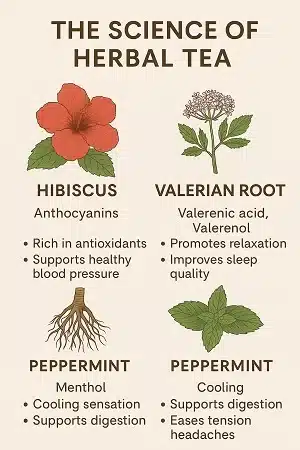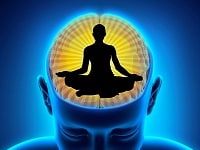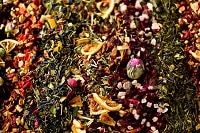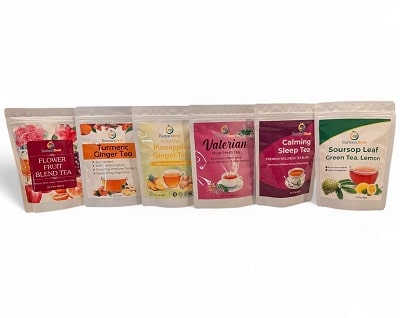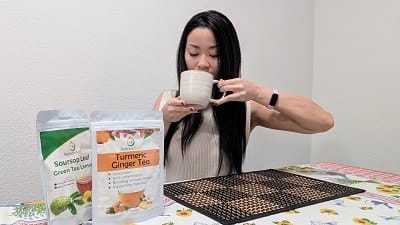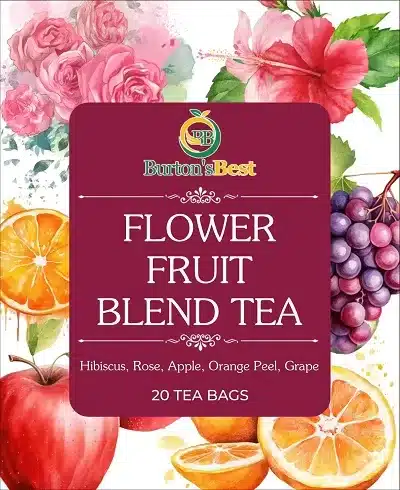The Science of Herbal Tea blends is more than folklore and old wives’ tales. For centuries, cultures around the world have used herbs in hot infusions to heal, restore, and relax. Now modern science is starting to back up what tradition has always known—herbal teas have real effects on both the body and mind. If you’ve ever wondered why a cup of chamomile helps you sleep, why peppermint feels cooling, or why hibiscus seems so refreshing, the answers come down to the compounds inside those plants.
Let’s start with hibiscus. Its vibrant red color comes from anthocyanins, a type of antioxidant also found in berries. These compounds don’t just look pretty; they help support healthy blood pressure and vascular function. When you drink hibiscus tea, you’re essentially giving your circulatory system a tune-up. Studies have shown measurable improvements in blood pressure for people who regularly consume hibiscus infusions. That tart, cranberry-like taste isn’t just refreshing—it’s a sign of powerful plant chemistry at work.
Now take valerian root. For centuries, people have used it as a natural sleep aid. The science of herbal tea helps explain why. Valerian contains compounds that interact with GABA receptors in the brain, the same calming system targeted by some prescription medications. While valerian isn’t as strong as a pharmaceutical, it helps the nervous system relax, eases tension, and promotes rest without harsh side effects. A cup before bed tells your brain it’s time to shift gears from stimulation to restoration.
Peppermint tea is another excellent example. The cooling sensation you feel isn’t just psychological—it’s the menthol interacting with receptors in your mouth and airway. Menthol opens nasal passages, soothes digestion, and even has mild pain-relieving properties. Science backs this up with research showing peppermint tea reduces bloating, helps ease tension headaches, and promotes smoother digestion. This is the brilliance of herbal infusions—they harness plant compounds in their most accessible form.
One of the key benefits revealed by the science of herbal tea is how gently these compounds act. Instead of overwhelming the system, they support balance. Antioxidants in hibiscus fight oxidative stress. Calming agents in valerian root help quiet the mind. Menthol in peppermint cools, relaxes, and refreshes. Together, these teas offer tools to help your body adapt, recover, and maintain equilibrium.
It’s not just about the chemistry, though. The ritual of making tea plays a big role. When you prepare a cup, you pause, breathe, and create a moment of mindfulness. Science shows us that these small rituals lower cortisol, improve heart rate variability, and reduce stress markers. The herbs do their work internally, while the act of drinking tea adds an external layer of calm and control. That’s a double win for wellness.
Another fascinating angle is synergy. Herbs often work better in combination than alone. That’s why blends are so popular. Peppermint with ginger supports digestion on multiple levels. Valerian with chamomile enhances relaxation. Hibiscus with rosehips amplifies antioxidant power. The science of herbal tea shows that these synergistic effects enhance benefits without needing high doses or complex formulas.
For anyone skeptical, the best approach is to treat herbal teas as a daily wellness practice. Choose hibiscus for a refreshing afternoon antioxidant boost, peppermint after meals for digestion, and valerian at night for sleep. The compounds will support your body, while the ritual itself supports your mind.
The science of herbal tea is simple but powerful: plants contain compounds that directly influence human physiology, and when you steep those plants in hot water, you access those benefits in their purest form. It’s a small, ancient practice that fits seamlessly into modern life. Every cup is a reminder that wellness doesn’t have to be complicated—it just needs to be intentional.

